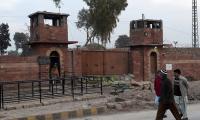There are some things we know. It is a vast landmass constituting almost one-third of Pakistan. It is sparsely populated with centres that are distantly located making it difficult to travel to, as well as reach in times of need. The terrain is difficult; arid, with hardly any cover from nature’s elements. This leaves spaces in between that remain infrequently visited for long lengths of time. In the age of terror, this makes for convenient hiding spaces. The resources of governance and administration thus are thinly spread with least mutual backup when faced with challenges of security.
China and Pakistan have recently operationalised the China-Pakistan Economic Corridor (CPEC) in Balochistan, as a part of the one-belt one-road project, meant to integrate the region in a trade and travel compact. In it, Gwadar Port is central to enabling China to provision as well as trade from its western regions. For the most part, the CPEC runs through Balochistan. Such facilitation to China by Pakistan doesn’t sit easy with those in the competitive mould to dominate the region.
Iran lies adjacent, with its own port at Chabahar, with its own plans to connect with Central Asia through Afghanistan. It is true that in days past, and even now perhaps, Iran has coveted Balochistan as a parsed portion of its eastern stretches of Sistan-Balochistan. But it remains only cyclic in manifestation. It adds to the complexity, though.
It is also true that Balochistan is Pakistan’s most underdeveloped region. Other than failures of successive governments to focus resources there, the tribal sardars and their henchmen have kept progress restricted to themselves, denying the common man any returns from the march of time. As a result the larger populace has remained poor and uneducated enabling the exploitative tribal system to retain its hold of them. The state has wilfully neglected responsibility to the common Baloch by appeasing the influential sardars.
Over time, the sardar has used his serfs to serve his objectives. These have included periodic rebellions against the state in the name of separatist nationalism causing a pervasive disquiet. The State of Kalat’s rather reluctant accession with Pakistan in the early days forms the folklore that both the Baloch and those interested in stirring trouble there have used to reasonable effect. The state has failed to ameliorate such manipulation and the resulting sense of deprivation.
It is also true that India continues to upend Pakistan and its stability by stoking separatism through its network of spies and agents in Balochistan. Kulbhushan Yadav, an Indian naval commander, was recently apprehended while engaged in exactly these acts. He remains in Pakistan’s custody and has disclosed his and Indian intents there. Brahamdagh Bugti, a proclaimed leader for the movement to sever Balochistan from Pakistan, has recently been awarded the citizenship of India and continues to be harboured there. Indian Prime Minister Narendra Modi said exactly that when he threatened to break Balochistan away in a replay of the 1971 dismemberment of Pakistan.
The Lashkar-e-Jhangvi (LeJ), a proscribed sectarian outfit, has found roots in Balochistan’s wide spaces after it was dislocated from its traditional hub in Punjab and has begun its venomous anti-Shia and anti-state activities there. They have, till date, survived the requisite pursuit for their complete elimination. Daesh, under threat in Syria and Iraq and under constant watch in Afghanistan, has also used the space in establishing a foothold that can only be greatly more menacing. The TTP and its affiliates sit across in Afghanistan.
The border with Afghanistan remains as porous and as tenuous as it is along its entire length up north. Border controls are loose per tradition, providing easement facilitation between the two countries. This also means that those trained to destruct, destroy and kill can move freely across the border. The presence of foreign intelligence agencies in Afghanistan, especially India’s RAW, means they can manipulate and direct such agents of destruction with the objective to destabilise Balochistan and show Pakistan as an unstable country awash with terror groups. Implicitly, it feeds the frenzy over fears of loose nukes in rogue hands. With the Trump administration on the anvil, this is particularly heinous.
When so much is wrong in Balochistan and has the potential to repeatedly strike, what are we doing about it? We have enough resources there to defend Pakistan; why are we failing at it, repeatedly? Securing every inch is not possible. Instead, we need to defend what is possible in strength, not in half measures like at the police training college, or at the Shah Noorani shrine. What seems to be missing is the efficacious use of the available resource under an integrated multi-layered plan. The military has no reason to avoid taking on this responsibility in earnest.
India’s offensive on our eastern borders while insurrection through the western border is aimed to saturate Pakistan’s responses creating a double jeopardy. Were Pakistan to be cornered into an aggressive, angry response through the conventional means or respond in kind to the insurrection, either way it shall, by upping the ante, cause escalation dominance to cede to India. A short war on the eastern borders is what India hopes will enable it to establish its military dominance over Pakistan. Otherwise, they hope Pakistan will snap from the inside.
While necessary assets to defend Balochistan already exist, what lacks is their harmonisation into a cohesive, integrated deployment; and an accountable mechanism to deliver specific results.
The chief minister must put up his hand to this responsibility. He may not be as powerful as the HQs Southern Command there, but bigger things are achieved through simple steps, and a little political investment. Looked at another way, a serious activation of the apex committee will bring varied organisations to a common objective, permitting the development of an integrated defence plan while making them functionally accountable.
India’s plan against Pakistan rests on three planks: a diplomatic offensive to take space away; a terror war, particularly in Balochistan as the inner front; and pressure on the LoC and Working Boundary through an incessant artillery campaign as its external ploy. A more assured defence of Balochistan is needed to address that vulnerability.
If diplomatic initiatives accompany that, it will not only recover lost space, it will also take the steam out of Indian aggression. The LoC and the Working Boundary will resolve itself. The design to destabilise Pakistan needs to be matched by a competing antidote. It is time to connect the dots and mount an effective response. A sound defence in Balochistan is the key to such a response.
Email: shhzdchdhry@yahoo.com
The post-election situation will be troublesome and worrisome for Modi
Most favourable concept developed so far revolves around public-private partnerships
There is only one way forward: cut non-development expenditures, including non-combat defence expenditure
The plan aims to ensure financial stability, control inflation, and promote economic prosperity
Currently, a staggering 60 per cent of government revenue is being wasted on interest payments
It seems that Beijing’s goodwill, stronger financial stature, principle of non-interference in domestic affairs and...







